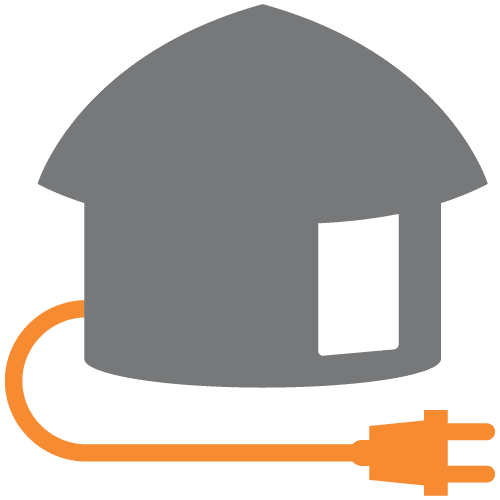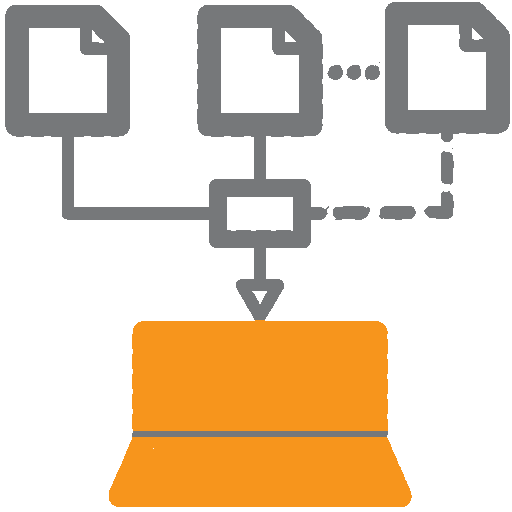Digital Agriculture Profile • Grenada


With support from



With support from

As part of the initiative on Digital Agriculture Transformation, this Digital Agriculture Profile for Grenada leverages the expertise of stakeholders to evaluate the current landscape of digital agriculture in the country, including its key players across value chains, the main barriers faced, and the potential to overcome these barriers through the adoption of innovative technologies. In identifying and prioritizing these technologies, we aim to support investors and implementers in maximizing their impact by focusing on the opportunities of highest potential. Once enabling factors are identified and understood, the mainstreaming of digital agriculture in Grenada can begin in earnest.

%
of Grenadines have ELECTRICITY
%
Mobile phone penetration since several years
Between 2016-2018 internet penetration has increased from
%
to
%

Mobile-broadband plans with a data allowance of 500 MB per month cost 3.7% of the GNI per capita, close to the world average of 3.6
Grenada ranks 73rd worldwide on the ICT Development Index
Grenada is appropriately known as the Spice Island; spices such as nutmeg and mace are the country’s principal exports, and reached a value of nearly 10 million USD in 2016 [1]. Agriculture employs 13.8% of the national labor force and contributes 5.88% of the Gross Domestic Product. Recent years have brought significant new challenges, as well as important investment opportunities, to agriculture in Grenada.
The majority of producers (80%) in Grenada are small-scale farmers with plots of less than 0.2 hectares. Agriculture in Grenada currently lacks the contemporary technologies and decision support tools necessary for sustaining and improving yields. This challenge is exacerbated by climate change; Grenadian farmers are grappling with increasingly volatile weather, more frequent extreme weather events, and accelerated environmental degradation, all of which have recently brought significant long-term damage to entire sectors of the agricultural economy. Other stakeholders along agricultural value chains, including input providers, distributors, and consumers, also face substantial challenges, including lack of product quality, high input prices, lack of information on best practices, and lack of market information for informed decision making.
[1] OEC, “Grenada Export, Import, and Trade Partners.”
One possible solution to address these challenges is digital agriculture. While the concept of digital agriculture is relatively new and still evolving, foundational technologies such as mobile and Internet connectivity are already available to support innovative digital solutions to the biggest challenges faced by the agricultural sector. Furthermore, the pre-dominantly high value nature of the agricultural products being cultivated in Grenada means production is commercially-focused and opens the doors for digital services.
Digital agriculture is the use of new and advanced technologies, integrated into one system, to enable farmers and other stakeholders to improve their products and processes. Integrating digital solutions into agriculture can improve efficiency by decreasing financial and labor costs, by providing information to support management decisions, by increasing product quantity and/or quality, by reducing losses, and/or by ensuring effective and sustainable use of resources. Ultimately, the transition to digital agriculture presents a unique opportunity to spur sustainable economic growth and development by addressing agriculture’s biggest challenges.
HIGHLIGHTS
The agricultural sector of Grenada employs 13.8% of the labor force and the total value of agricultural exports amounts to US$13.4 million.
Extreme weather, biophysical island characteristics, low quality standards, low economies of scale in production are the primary challenges facing Grenadine agriculture.
Digital infrastructure is well established in Grenada, for example, there are 111 mobile-phone subscriptions per 100 inhabitants. However, the primary constraints to digital agricultural solutions are digital literacy of user groups along the value chain and economies of scale.
The most promising technologies for addressing agricultural issues in Grenada include Internet-based information sharing, advanced analytics with SMS/IVR communication technologies for market analysis and advisory services, barcoding for traceability of agricultural, and technologies for land tenure determination.
The public sector, non-profit organizations, private industry, and international community all have important and distinct roles to play in creating sustainable digital agricultural solutions in Grenada.
Digital solutions to specific challenges in the food system’s hubs
Digital agriculture end users may be generally grouped into four hubs, namely, input, production, distribution and consumption. Each hub has unique resources and needs in terms of digital agriculture innovations, and each hub faces unique challenges for which digital agriculture could offer solutions. The hubs are not mutually exclusive, as any given individual may function within multiple end user hubs. The users in these groups, along with the key challenges these users face and the prioritized digital solutions to overcome these challenges, were identified through a consultation process and a workshop with the key experts in the (digital) agricultural sector in Grenada.
Click on the arrows / hubs below to find out more about users demand for digital agriculture technologies within each of the food system hubs.
ACROSS THE FOOD SYSTEM
Across the food system
Challenge
Technology
Analysis
Challenge
Improving tracing and tracking in the value chain
Improving market information for farmers and other players to inform choices in the value chain
Scaling new approaches and the use of digital technologies
Technology
Barcoding for traceability
Advanced analytics/Apps for market analysis
Platforms for peer-to-peer knowledge sharing
Analysis
INPUT
PRODUCTION
DISTRIBUTION
CONSUMPTION
INPUT HUB
Input Hub
The Input Hub relates to the provision of agricultural inputs for crop and livestock production. Such inputs include seeds, feeds, agrochemicals, machinery, and finance. In Grenada, the input hub is primarily composed of local retailers of imported products. End users in this hub seek decision support tools for optimized input identification and selection, as well as improved product monitoring and traceability.
Challenge
Technology
Analysis
Challenge
Improving the land tenure situation for smallholder farmers
Improving government services (extension, water, etc)
Technology
Satellites/GPS information for land tenure determination

Remote sensing/analytics for early-warming systems
Analysis
PRODUCTION HUB
Production Hub
The Production hub is dominated by small-scale family farms with limited economic viability that are primarily oriented towards self-consumption and local markets, with the exception of the spice section and cacao growers that have a main focus on international markets. Despite generally low digital literacy rates, there is demand for digital agriculture solutions from Production hub end users. Advisory services, weather and vegetation dynamics monitoring, increased financial services access, and improved product traceability would all assist farmers in augmenting productivity and gaining access to international commodity markets.
Challenge
Technology
Analysis
Challenge
Making farming systems effective and efficient based on quantitative information
Technology
Sensors/applications for real-time location/health information on livestock
Computer/Smart phone applications to support farmers’s decision making
Advanced analytics + user software for (digital) extension services
SMS/IVR systems for decision support for lowertech farmers
IoT for input information/ smart farming/ irrigation
Analysis
DISTRIBUTION HUB
Distribution Hub
The Distribution hub consists of all actors in the value chain between farmers and the consumer, such as traders, transporters, and processors. Food distribution in Grenada focuses on imports from the USA, primarily for hotels and resorts in the tourism sector. A distribution network for the export of raw nutmeg, bananas, cocoa, fruits, and vegetables is also well established. The processing and manufacturing industry consists of 265 small and 9 medium sized processors , but the expensive value-added products, such as nutmeg oil and oleoresins, are all manufactured outside of Grenada. Significant barriers for this hub include poor market access, low mechanization, and poor monitoring and traceability systems.
Challenge
Technology
Analysis
Challenge
Improving the efficiency of processing processes
Technology

Advanced analytics for monitoring and sorting (post-production/ distribution)
Analysis
CONSUMPTION HUB
Consumption Hub
The Consumption hub is predominated by two major categories of food consumers: tourists who consume primarily from hotels, resorts, and restaurants, and Grenadians who consume directly from farms or from local grocery stores. In both cases, product monitoring and traceability offers important opportunities for consumers to make informed purchasing decisions in terms of the quality, origin, and environmental impact of their food purchases. This also enables producers of higher quality products to promote and market them as such.
Challenge
Technology
Analysis
Challenge
Improving access to nutritional, environmental footprint and origin information
Technology
Smart phone applications for e-labeling and nutritional information
Analysis
OUTLOOK
Grenada has laid a foundation for digital agricultural solutions. Connectivity and subscription rates are high, and the number of individuals using internet is increasing. This suggests important opportunities for digital solutions to the major challenges facing Grenadine agriculture.
Our research suggests that stakeholders who focus their efforts on Internet-based information sharing and advisory services, data analytics, barcoding, SMS/IVR, and GPS are most likely to bring high-impact solutions to Grenada’s agriculture sector. Supportive national policy, public-sector investment, private sector engagement in innovation and monetization, research and development contributions from organizations such as CGIAR and FAO, and international donor support will all be crucial to ensuring the success of such solutions.
Integrating digital solutions into the Grenadian agricultural value chain will enable stakeholders to make better informed decisions and address the core challenges within the food system. Digital technologies are a solid base on which to found solutions such as land tenure legislation and water and land management practices. Through the utilization of decision support applications, including digital extension services, farmers can increase both production as environmentally sustainable practices. Joining efforts implemented by other countries will significantly reduce the cost of development and open the way for the agriculture sector as a whole to transform towards a higher level of environmental sustainability, equity, efficiency and prosperity.



